Quick change tool post ?
| Rich2502 | 30/06/2022 15:14:13 |
| 83 forum posts 3 photos | What quick change tool post would you recommend for an Atlas 12" lathe?
I'm looking for no frills value for money not junk but not high spec. |
| Bazyle | 30/06/2022 15:54:43 |
6956 forum posts 229 photos | I think 12" lathes can be just on the borderline between two sizes and the best one for your particular lathe can depend on teh exact height of the top of the topslide and the thickness of the bottom ledge of the toolholders. Careful measurement may be called for. There have been quite a few threads on this subject so with any luck a search will find someone else who has posted that they have the same lathe. |
| Andrew Johnston | 30/06/2022 16:33:04 |
7061 forum posts 719 photos | Posted by Rich2502 on 30/06/2022 15:14:13:
What quick change tool post would you recommend for an Atlas 12" lathe? I wouldn't, I use the 4-way toolpost that came with the lathe. My lathe is 12" x 40" so similar size. Andrew |
| JohnF | 30/06/2022 19:29:17 |
1243 forum posts 202 photos | I use Dickson QC tooling and have done since the early 1960's when they first appeared on the market, I would not be without it ! There are many other types available now and lots of clones of every type, originals are best but expensive so if buying a clone choose wisely form a well known supplier, Bison are excellent quality and interchangeable with Dickson -- not so with many of the clones. For you machine I think the S1 [Dickson] or T1 [bison] size would be OK, lots of tables available so check these out. Another type thats popular is the Swiss pater Multifix system, more complex than Dickson IMO. John |
| Clive Foster | 30/06/2022 20:36:22 |
| 3630 forum posts 128 photos | +1 for Andrews suggestion of using a 4-way or other species of block post on the original mount. Most especially if you propose to be a thoroughly modern machinist using insert tooling. Todays prices for name brand inserts on special offer or (even cheaper) well chosen direct from China Inc make it questionable whether the lifetime financial saving at normal Model Engineer / Home Workshop guy/gal consumption rates are worth the cost and hassle of setting up to grind HSS tooling. As the tool tip height relative to holder base is, for all practical purposes, fixed a conventional QC post has no advantage over a block type. Whether single, two or four way. The major advantage of a QC system is the ability to keep a number of tool holders pre-loaded with useful tools. Which is convenient but comes at considerable expense. It seems generally agreed that between 10 and 16 holders are needed to avoid running out of pre-loaded tools at in-opportune moments. Over the years I managed to obtain 16 or so Dickson T2 size to share between two lathes at merely "ouch" prices. Probably over £1,000 worth new now and, at best, half price for decent generic. Effective block type posts can be made by gluing and screwing stock plate and bar sections together. There is no great difficulty in arranging for the bottom plate to be exactly the right thickness for your chosen insert holders. HSS stock still has to be shimmed to get the tip height right, which is not the issue its often claimed to be if done by measurement off the machine. Keeping the shim stack with the individual tool is a potential problem best dealt with by making several blocks and keeping them pre loaded as for QC holders. But much cheaper. Your Atlas has a T slot in the top slide so a fixed post with a hole for holder registration is easily made. Here is the one I made for my P&W Model B. The ring screws down using pin spanner holes to lock it into position. The Tee nut could either be machined or made by screw'n glue from stock sections. That one is fully machined but I've used screw'n glue for Tee nuts on SouthBend machines as their Tee slots take stock imperial bar sizes so its all very easy. That one is made for a Dickson post so having to undo the nut on the rare occasions I wish to change over to special purpose blocks is no great issue. Spinning off a nut to swop between multiple blocks doesn't take long but if its annoying there are various ways of making a part turn release system. The one I'd favour is to make the stud in two parts with the upper parts free to turn and cross drilled to take tommy bar. The tool posts are held down via hollow nut screwed into the top with castellations sized to match the tommy bar. A partial turn of the tommy bar releases it enough for easy withdrawal allowing the post to be easily lifted off. I'm partial to the Armstrong holders for HSS. On standard blocks the projection can be excessive but shop made versions can be cut away on the front third so it can be pulled back further. 1/4 bits in an Armstrong will handle all your Atlas needs to do. That's what it was designed for after all. Albeit via the never to be sufficiently cursed lantern post. Clive |
| Howard Lewis | 01/07/2022 07:02:20 |
| 7227 forum posts 21 photos | My 12" lathe came with a 4 way toolpost, and that has sufficed for my use (Together with a four way post mounted on the rear of the Cross Slide to carry front and back chamfering tools as well the parting tool. ) Most of my work is done using just the six tools, (Rougher, Tangential tool as a finisher and a Boring Bar in the front toolpost ) but very occasionally one has to be removed for knurling or radius turning. Internal chamfers are produced using tailstock mounted tooling. In my case, space is not easily available to store a number of QCT holders, so am spared the expense of such a setr up.. If you want a QCT, by all means fit one, but two comments by others come to mind, namely, that one QCT advocate said that changing tools on a QCT was little , if at all, thatn a four way. Another comment made by someone else was that a QCT was less rigid because of the greater over hang and the number of interfaces. The advantage ought to be that once set up in a holder, the tools should be at centre height as soon as it is fitted. Purely a Luddite comment, but an Atlas is an elderly lathe, and probably predates QCT, so would look more original with a four way. But the choice is yours! Howard |
| Hopper | 01/07/2022 07:33:07 |
7881 forum posts 397 photos | Once you get used to using a four-way toolpost, you can tell by looking at a toolbit how many pieces of your standard packing strips you need underneath it. EG on my Myford, I know that 10mm insert tools fit straight in with no packing. 3/8" HSS needs one packer, if ground so the point is in line with the top of the blank. On older or ground down tools, you can look at it, or hold up a couple of packing strips to the point, and tell how many are needed. As I mostly use the same small number of tools over and over, I know them well enough to know how many packing strips each one takes. You can even keep them in a tray etc with the packing strips under them ready to go next time. I think a lot of people get hung up on thinking their tool point needs to be dead on centre to the thou, but that is not so. Most will tolerate a slight bit above centre and a lot below. Actually, a bit below centre height often gives better cutting. +1 on preferring not to have the extra overhang of a QCT on an old or small lathe. |
| SillyOldDuffer | 01/07/2022 09:26:49 |
| 10668 forum posts 2415 photos | I'm another who hasn't bothered with a QCTP, for reasons eloquently explained by friends above! But I'm not against Quick Change Tool Posts in principle, it's just that they aren't a good match to my needs and I have plenty other things to spend my money on. Turning metal into swarf is expensive! The advantage of a QCTP is the 'quick change'. They pay off in a busy workshop where the operator prefers HSS and does lots of work that require frequent tool changes. When that's the case, having a large selection of different ready sharpened tools pre-set to height in cartridges is a boon. Opinions vary, but more cartridges are better, at least 6 or 8. In contrast, my work pattern is slow, I don't change tools that often, have at least two ready in the 4 way, and prefer carbide inserts. As inserts are changed without disturbing the holder or tool-post, they're faster than unplugging blunt HSS for sharpening and then resetting the height. I could speed up tool changes by super-gluing shims to the holders, but haven't bothered - no need, it's a hobby. Bear in mind all tools are a compromise in one way or another. QCTPs introduce overhang, undesirable because it encourages chatter, and might also stop a tool being used very close to the chuck. As the pros and cons of QCTP depend on what the lathe is used for, my advice to newcomers is not to rush into fitting one After the dust has settled and work started in earnest, it will soon become obvious whether or not a QCTP is a good buy or not. A DRO might be a better choice. But there is another side of the hobby: pride of ownership and desire to have workshop capability, even if it's not often put to work. Considerable pleasure to be had from setting up a beautiful workshop full of polished tools neatly organised, 'quality' equipment deep cleaned and painted the correct colour, and a large library of technical classics. In which case buy whatever makes you happy, it's allowed! Dave |
| Hopper | 01/07/2022 09:34:28 |
7881 forum posts 397 photos | Indeed. Whatever floats your boat. I've a mate up the road, a lifelong machinist, who swears by QCTs and wouldn't go back to using anything else. But he runs his machine shop as a small business and is constantly racing the clock. For me, it's a pastime, so if I pass an extra 30 seconds of time changing a toolbit, so be it. |
| Andrew Johnston | 01/07/2022 12:10:33 |
7061 forum posts 719 photos | Posted by Hopper on 01/07/2022 07:33:07:
..people get hung up on thinking their tool point needs to be dead on centre to the thou...
Oh my word, an outbreak of practical engineering. I don't sweat over tool height, just line up by eye against a tailstock centre. A few thou here and there makes little difference. The smaller the work diameter the more accurate the tool height should be, but I rarely turn much under 1/4" on the centre lathe. Probably 75% of my turning is done with two tools, a CCMT insert and a parting off tool. For these tools I keep the appropriate shims with the holders. Boring bars, profiling and HSS specials are shimmed as needed. Doesn't take long and specials might only be used once, so no point in having a dedicated holder. I tend to run my lathe to the limits in terms of speeds, DOC and feedrates, so prefer the better rigidity of a 4-way toolpost. Just to show that I'm not completely anti QC toolholders I do sometimes use a Dickson QC toolpost, as it is what the hydraulic copy unit came fitted with: Note the radial spline on the left where the 4-way toolpost sits. It allows repeatable indexing of the normal toolpost every 9°; another reason I wouldn't change to a QC toolpost. Andrew |
| JasonB | 01/07/2022 13:21:36 |
25215 forum posts 3105 photos 1 articles | It's not just the tool height issue that makes a QCTP useful. If you are doing jobs on more than one identical item that may need two or more tools you can swap them over and the tip will still be in the same place so the same handwheel or DROO readings can be used. Not easy with a 4-way unless it's an indexing one which many are not. |
| Bazyle | 01/07/2022 13:22:09 |
6956 forum posts 229 photos | Somewhere in the 'know your lathe' old SouthBend / Boxford book it actually says put the tool a little above centre. They don't mention why but the reason is to provide a component of force outwards to take up the backlash and reduce chatter. |
| Clive Foster | 01/07/2022 14:16:53 |
| 3630 forum posts 128 photos | Posted by JasonB on 01/07/2022 13:21:36:
It's not just the tool height issue that makes a QCTP useful. If you are doing jobs on more than one identical item that may need two or more tools you can swap them over and the tip will still be in the same place so the same handwheel or DROO readings can be used. Not easy with a 4-way unless it's an indexing one which many are not. There are various relatively simple ways of arranging sufficiently accurate indexing on a four way tool post that doesn't have the capability built in. A pin, preferably tapered, entering a matching hole is more than adequate for almost all purposes. A simple external ratchet device engaging in a suitable cut out on the base ought to be quicker but maybe not be quite as a accurate. Obviously the superb spring lifted multi-position face ratchet systems fitted to the four way posts on the better class of British lathes are more accurate and more versatile. But I seriously doubt whether the multiplicity of angles compared to the four easily selected using pins or external ratchet are of any general use beyond bragging rights. Most QC systems have only 2, 3 or 4 angles anyway. If the block post is made so it can easily be changed and incorporates suitable indexing methods it has the same tool tip position repeatability as a QC system. Indeed I've often wondered how the QC system became the approved way when its clearly considerably more expensive than a system based on interchangeable blocks. The components of a QC system must be hardened and accurately ground to size if it is to work well for any length of time. Basic machining on ordinary materials will produce entirely satisfactory blocks. Clive |
| JasonB | 01/07/2022 14:56:48 |
25215 forum posts 3105 photos 1 articles | The quick part may come into it as if in production a 1/4 turn to change tool and a 1/4 turn to refit will be faster than winding a nut off a block, swapping the block and putting a nut back on again. Many of the deeper section parting off blades will hang down too far to allow for rotating tool posts which is another thing to consider I don't find angles come in to it much, my QCTP stays square on most of the time and I have sufficient holders for all my commonly used tools (mostly insert) as soon as you have to change a tool in a 4 way it's position is lost irispective of indexing and once you start mixing left and right hand tools you may only have 3 usable positions Dave was wondering how I work so quickly in a recent thread, maybe there is a clue here Edited By JasonB on 01/07/2022 14:59:48 |
| SillyOldDuffer | 01/07/2022 15:02:38 |
| 10668 forum posts 2415 photos | Posted by JasonB on 01/07/2022 14:56:48: ... Dave was wondering how I work so quickly in a recent thread, maybe there is a clue here
Nah, I prefer my explanation - an unholy alliance with supernatural forces...
|
| not done it yet | 01/07/2022 16:51:06 |
| 7517 forum posts 20 photos | Posted by Bazyle on 01/07/2022 13:22:09:
Somewhere in the 'know your lathe' old SouthBend / Boxford book it actually says put the tool a little above centre. They don't mention why but the reason is to provide a component of force outwards to take up the backlash and reduce chatter. The simple reason is that the tool will be deflected downwards when cutting. |
| Howard Lewis | 04/07/2022 07:12:17 |
| 7227 forum posts 21 photos | On the subject of locating a four way toolpost. My BL12-24 has a spring loaded "pawl" in the Top Slide which engages with a slot in the underside of the the toolpost, to set it "square" across the Top Slide.. The mini lathe uses a similar system. There is no reason why the toolpost cannot be clamped, offset from the "pawl" From time to time, mine is. For my four way rear toolpost, (Which rotates about a central dowel ) I just made up a simple dowel from 1/4" silver steel, and reamed four holes in the base which is attached to, and located by dowels against the rear face of the Top Slide. A similar method of location has been used when making a fourway to mount on the Top Slide of a Raglan, and for a couple of other lathes, Because of the height of the Top Slide on the Raglan, the post had to be a little slimmer (Vertically ) than I would have liked, but it does the job. The rear toolpost was laminated, from some 1" x 3" ground bar that I was given, rather than milled from the solid It featured in M E W not too long ago. The dimensions can be changed to suit the machine to which the toolpost is going to be fitted. Howard |
| Hopper | 04/07/2022 08:06:37 |
7881 forum posts 397 photos | I can't think of a time in the past 10 years that I had a repetition job that required indexing the toolpost, even though the Myford has such facility. Seems like most of what I do is one-offs. Another little thing I have done on the Myfrod 4-way is convert to using cheaper and easier to grind 1/4" HSS toolbits in place of the old 3/8". To make this easier, I took some pieces of 3/8" square key steel and milled a 1/4" x 1/4" recess along one side so it is like an L shape. The 1/4" HSS nestles in it perfectly so no fiddling about lining it up under the clamping screws etc. And you can stick it out of the toolpost a bit for extra support where a bit of overhang is needed. Milling was done in the lathe, clamping the key steel in the toolpost sticking out a bit and milling with a 1/2" cutter in the chuck, which gives perfect centre height for 1/4 square HSS. The way I grind and resharpen my toolbits, taking material off the front edge, not the top surface, means extra shims are very rarely needed.
Edited By Hopper on 04/07/2022 08:15:54 |
| Andrew Tinsley | 04/07/2022 09:59:48 |
| 1817 forum posts 2 photos | Like the OP, I thought that a QCT system was de rigour before I had a little more experience. On a Myford, the QCT is noticeably less rigid than the Myford 4 way holder. I tend to be lazy and find the QCT less hassle, BUT if I want accuracy and a good finish then the 4 way comes in to play. If the OP is a beginner, then I would spend my money on more vital things than a QCT setup. Andrew. |
| steamdave | 04/07/2022 10:58:26 |
| 526 forum posts 45 photos | I used to have a GHT 4 way indexing toolpost for my Myford. Actually I made 2, one for machining ferrous metals, the other for non-ferrous. Surprisingly I very rarely changed between the two blocks, it was quicker to swap out the cutting tools (which were kept pre-shimmed). A few years ago when 'everybody' was advocating the QCTP made by a company supplying Myford, I changed over. Biggest mistake I ever made. It maybe 'quick change', but not as quick as spinning the turret round one or 2 places. It is definitely not as rigid as the GHT toolpost. One thing that hasn't come up this time is that people complaining they snag their hands on the non-cutting tools. I don't remember doing that and I can be quite careless. For those folk, there is always the Lammas 3 way toolpost. Dave |
Please login to post a reply.
Want the latest issue of Model Engineer or Model Engineers' Workshop? Use our magazine locator links to find your nearest stockist!
Sign up to our newsletter and get a free digital issue.
You can unsubscribe at anytime. View our privacy policy at www.mortons.co.uk/privacy
- *Oct 2023: FORUM MIGRATION TIMELINE*
05/10/2023 07:57:11 - Making ER11 collet chuck
05/10/2023 07:56:24 - What did you do today? 2023
05/10/2023 07:25:01 - Orrery
05/10/2023 06:00:41 - Wera hand-tools
05/10/2023 05:47:07 - New member
05/10/2023 04:40:11 - Problems with external pot on at1 vfd
05/10/2023 00:06:32 - Drain plug
04/10/2023 23:36:17 - digi phase converter for 10 machines.....
04/10/2023 23:13:48 - Winter Storage Of Locomotives
04/10/2023 21:02:11 - More Latest Posts...
- View All Topics
- Reeves** - Rebuilt Royal Scot by Martin Evans
by John Broughton
£300.00 - BRITANNIA 5" GAUGE James Perrier
by Jon Seabright 1
£2,500.00 - Drill Grinder - for restoration
by Nigel Graham 2
£0.00 - WARCO WM18 MILLING MACHINE
by Alex Chudley
£1,200.00 - MYFORD SUPER 7 LATHE
by Alex Chudley
£2,000.00 - More "For Sale" Ads...
- D1-3 backplate
by Michael Horley
Price Not Specified - fixed steady for a Colchester bantam mark1 800
by George Jervis
Price Not Specified - lbsc pansy
by JACK SIDEBOTHAM
Price Not Specified - Pratt Burnerd multifit chuck key.
by Tim Riome
Price Not Specified - BANDSAW BLADE WELDER
by HUGH
Price Not Specified - More "Wanted" Ads...
Do you want to contact the Model Engineer and Model Engineers' Workshop team?
You can contact us by phone, mail or email about the magazines including becoming a contributor, submitting reader's letters or making queries about articles. You can also get in touch about this website, advertising or other general issues.
Click THIS LINK for full contact details.
For subscription issues please see THIS LINK.
Model Engineer Magazine
- Percival Marshall
- M.E. History
- LittleLEC
- M.E. Clock
ME Workshop
- An Adcock
- & Shipley
- Horizontal
- Mill
Subscribe Now
- Great savings
- Delivered to your door
Pre-order your copy!
- Delivered to your doorstep!
- Free UK delivery!

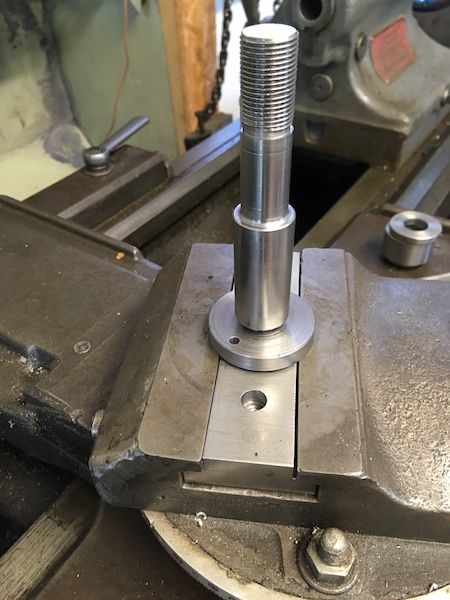
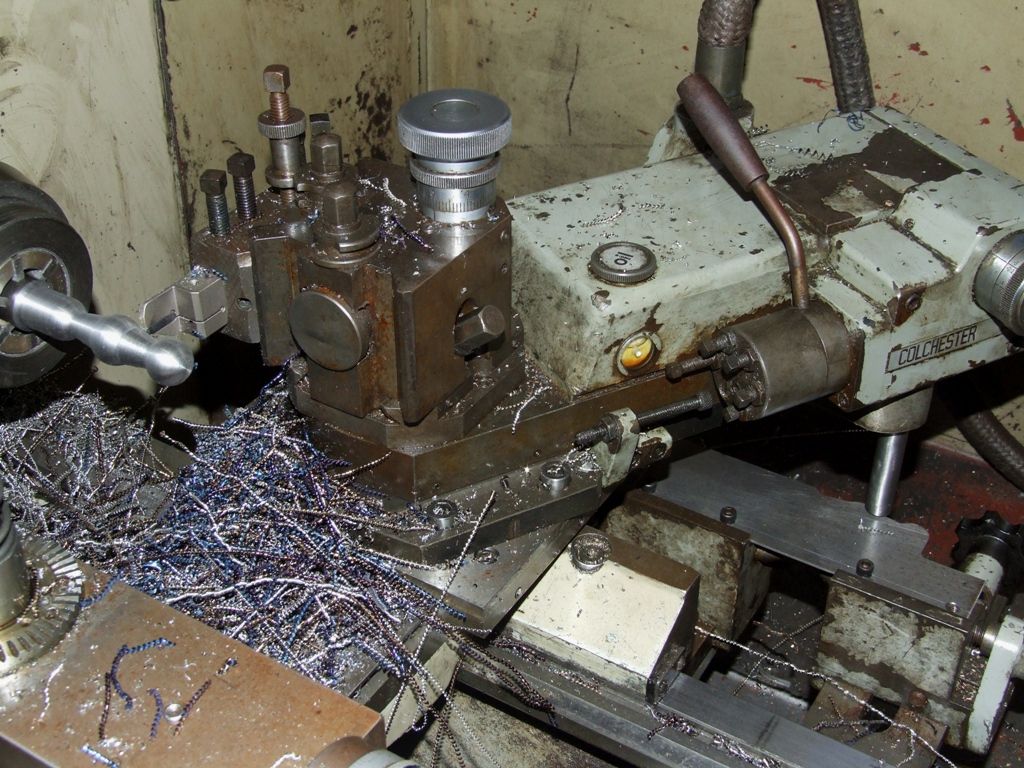
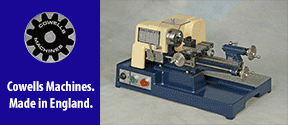
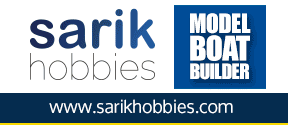
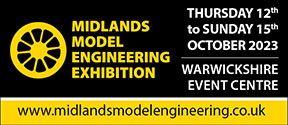
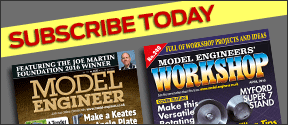





 Register
Register Log-in
Log-in


